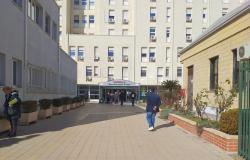
The former Tognazzi cinema in via Verdi will become a youth meeting center with study spaces, a library and services dedicated to Cremonese children and university students. Thirteen years after the cinema closed, the structure in the heart of the city will come back to life. The official announcement and some details on the operation are still missing but the historic initiative seems to be truly on its way. The idea comes from the Arvedi Buschini Foundation which in this way still wants to make a fundamental contribution to the rebirth of the city by giving it the face of “Cremona, a friend of young people and a university center of excellence” already started with the extraordinary recovery of the convent of Santa Monica ( for the courses of the Catholic University) and of the former Manfredini barracks (new headquarters of the Polytechnic).
The recovery of the Tognazzi Cinema (two rooms and the large foyer) had been in Cavalier Arvedi’s dreams for some time and several meetings were held with the Municipality to best define the destination and purpose. For the same purpose (study center and youth gathering) it was also thought about purchasing the former Education Authority but then it was opted for the Tognazzi cinema, also to make a further contribution to the relaunch of the center (the former cinema two views, one on via Verdi, the other with the old emergency exits on via Gramsci). Among other things – we learn – that the Municipality could transfer the Informagiovani office in via Palestro here (which could be the manager of the meeting centre) and this would allow in the future to proceed with the relaunch of Palazzo Affaitati as a large museum and cultural venue ( enlargement of the Museum and Art Gallery, Natural History Museum, Library) also combining the recovery of Palazzo Soldi in the project.
The Tognazzi cinema was inaugurated on 16 October 1993. “Daddy’s house”, as Ricky Tognazzi called the former Enic cinema, then Roxy, which came back to life thanks to the Piacenza entrepreneur Leopardi, two rooms for a total of a thousand seats. Leopardi had also included the redevelopment of the former Cinema Italia, which later closed down, as part of his great project to relaunch cinema in Cremona. The three children of Tognazzi and Simona Izzo arrived at the inauguration with great fanfare with movie stars and authorities, so much so that it was necessary to cordon off Via Verdi to contain the curious. Also present were Paolo Villaggio and Sandra Mondaini. The opening film was the first ever viewing of ‘Sud’ by Gabriele Salvatores.
To give prestige to the great Cremonese actor, Cremona invented the Tognazzi prize for the best Italian cabaret artist to be held in the cinema dedicated to the great Ugo. For a few years it was a parade of stars: Verdone, Wertmuller, Abatantuono. The award was won among others by Max Pisu, Ficarra and Picone, Enrico Bertolino, actors who began a successful career from there. Then the crisis and on Wednesday 31 March 2011 the last screenings: in room 1 “The King’s Speech”, in room 2 “Friends, lovers and…”.
That of Tognazzi cinema it is a story full of misadventures. It had been inaugurated on the evening of January 31, 1941 almost silently, without great official ceremonies, with one of the most popular films of the moment, “Goodbye Youth” by Ferdinando Maria Poggioli with Carlo Campanini and Clara Calamai. The new room, in reality, was born as “Cinema Littorio“, and was managed by Enic, the National Film Industries Board, created a few years earlier by the Istituto Luce as part of a large project intended to include the new Cinecittà studios and the Experimental Cinematography Center to propose in Italy the idea of a state cinema.
The engineer Nino Mori, who also directed the construction works, built the new room, which is located in the Social Security building. The “Littorio” cinema is destined to compete in magnificence and technical solutions with the “Supercinema”, inaugurated not even three years earlier, on 9 April 1938, based on a design by the industrial expert Guido Tarsetti. And in fact the regime spares no expense: the atrium is completely covered in green cipollino marble from the Apuan Alps and paved with sanguine porphyry, the stairs leading to the stalls and the gallery have bases made of ancient travertine and the two rooms are painted uniformly in light yellow.
In the atrium there are two marble high reliefs created by Dante Ruffini based on a design by Mario Busini, which represent two allegories of artistic genius and dramatic art. Two terracotta reliefs are set on the sides of the stage Aldo Andreani. But this magnificence is erased: the night between 1 and 2 February 1957 a fire breaks out and destroys a large part of the room. It seems that the fire started from a grate of the heating system located near the orchestra pit, where some sawdust used by the cleaners for cleaning may have fallen and a cigarette butt would have accidentally ended up. A somewhat shaky hypothesis that no one believes.
Then after many hardships the reconstruction.We also decide to choose a new name, after “Littorio”,”Of victories” and “Enic”. The proposals are wasted: we go, with little originality, from “Stradivarius” to “Luigi Carini”, proposed by Umberto Sterzati, to “Central”,”Orpheus”,”To the Muses”, “Parnassus” and “Euterpe“, from “Torrazzo” to “Giuseppe Cremonini“, until one fine day, towards the middle of April 1958, the writing “Roxy” with the announcement of the reopening on Saturday 26 April. The film chosen for the inauguration is “Sunday is always Sunday” by Camillo Mastrocinque. The workers worked day and night to arrive on time for the appointment, transforming the atrium with walls in fine wood and leather, a new ceiling and fluorescent lighting. The Roxy closed for holidays in 1980, never to reopen. Then the rebirth as Tognazzi and closure again.





